A recent study by MORRIS, et al. (2025) titled “OPTIMIZATION OF SATELLITE-BASED TELEMEDICINE NETWORKS FOR RURAL CONNECTIVITY: A CASE STUDY OF IGU VILLAGE, ABUJA” published in the Journal of Advanced Science and Optimization Research reveals that properly optimized satellite-based telemedicine networks—using techniques like Particle Swarm Optimization—can significantly improve healthcare delivery in rural areas.
“
Optimized satellite-based telemedicine networks using NigComSat-1R and Particle Swarm Optimization significantly improve rural healthcare access, reliability, and data throughput.
– MORRIS, et al. 2025
This study explores how satellite communication, specifically Nigeria’s NigComSat-1R, can be optimized to provide reliable telemedicine services in rural areas where traditional internet infrastructure is limited. Focusing on Igu Village, Abuja, the research aims to design and simulate a satellite-based telemedicine network capable of overcoming the connectivity challenges typical of rural Nigeria. Rural communities like Igu Village face significant barriers to healthcare access due to poor internet connectivity. Telemedicine offers a critical solution, enabling remote consultations, diagnostics, and medical imaging. However, for telemedicine to function effectively, networks must deliver high bandwidth with low latency—a requirement difficult to meet using terrestrial solutions such as fiber or cellular networks in such regions. Satellite communication therefore presents a practical alternative.
The study leverages NigComSat-1R, Nigeria’s geostationary satellite, as the backbone of the telemedicine network. Using Particle Swarm Optimization (PSO), key network parameters were fine-tuned, including modulation schemes, forward error correction (FEC) codes, and power control, to maximize performance. Network behavior was modeled and tested under varying weather conditions using MATLAB simulations to ensure reliability. The results provide a scalable framework applicable to other rural regions across sub-Saharan Africa. The optimized network supports bandwidth-intensive telemedicine services, including high-definition video consultations, remote diagnostics, and medical imaging, thereby significantly improving healthcare access and outcomes in underserved communities.
How the Study was Conducted
The study employed a simulation-based methodology to design and optimize a satellite-powered telemedicine network for rural healthcare delivery in Igu Village, Abuja. Using Nigeria’s geostationary satellite, NigComSat-1R, the researchers developed a network model capable of supporting telemedicine services such as video consultations and remote diagnostics. Critical network parameters—including Signal-to-Noise Ratio (SNR), Bit Error Rate (BER), latency, and data throughput—were carefully considered to ensure reliable performance.
The entire network was simulated in MATLAB, incorporating typical Nigerian environmental conditions—sunny, rainy, and cloudy—to evaluate network resilience. To optimize the system, Particle Swarm Optimization (PSO) was applied to fine-tune key network parameters, including modulation schemes, forward error correction (FEC) codes, and power control strategies. PSO was selected for its ability to efficiently handle multi-objective optimization, balancing trade-offs between speed, reliability, and bandwidth.
Performance evaluation of the optimized network showed significant improvements: BER was reduced by over 99% under rainy conditions at 15 dB SNR, latency was maintained below 250 ms—suitable for real-time telemedicine—and throughput increased from 761.32 Mbps to 1840.95 Mbps at 50 MHz bandwidth. To ensure data integrity and reliability, error correction techniques such as Hamming Code, Reed-Solomon, and Convolutional Coding were implemented, alongside power control models to maintain consistent signal strength across varying weather conditions.
Igu Village, chosen for its challenging terrain and lack of terrestrial infrastructure, served as a case study demonstrating how satellite communication can bypass infrastructural limitations and provide effective digital healthcare delivery.
What the Authors Found
The authors found that properly optimized satellite-based telemedicine networks—using techniques like Particle Swarm Optimization—can significantly improve healthcare delivery in rural areas. Specifically, the optimized network dramatically reduced bit error rates, maintained low latency suitable for real-time consultations, and increased data throughput, all while remaining resilient under varying weather conditions. This demonstrates that satellites like NigComSat-1R can reliably provide high-performance, scalable telemedicine services in remote regions, bridging the digital and healthcare divide.
Why is this important
Bridging the Digital Divide: Satellite-based telemedicine connects rural communities like Igu Village to healthcare services, overcoming the lack of fiber optics, cellular towers, and reliable electricity.
Transforming Healthcare Delivery: Optimized networks enable real-time video consultations, remote diagnostics, and emergency care coordination, reducing delays and improving health outcomes.
Leveraging National Assets: Nigeria’s NigComSat-1R satellite is effectively repurposed to provide cost-efficient, sovereign digital healthcare infrastructure.
Proven Technical Viability: The network achieved a 99.94% reduction in transmission errors, latency under 250 ms, and more than doubled throughput, demonstrating readiness for real-world deployment.
Future-Proof and Policy-Relevant: The framework supports integration of AI, edge computing, and reinforcement learning, offering a scalable, sustainable model for rural healthcare and a strong basis for government and NGO investment.
What the Authors Recommended
- The authors advocate implementing the optimized network in Igu Village and similar rural areas to validate simulation results, address practical challenges, and train users.
- The study emphasises utilising reinforcement learning for dynamic network adaptation and edge computing to reduce latency and improve data processing near local telemedicine terminals. Increase satellite coverage, deploy portable ground terminals, and integrate telemedicine workflows with local health centers.
- In addition, encourage government and private sector investment, and establish regulatory frameworks for telemedicine, data privacy, and digital health standards.
- Furthermore, adapt the framework for other regions in Africa, explore alternative optimization algorithms, and investigate quality-of-service metrics and security protocols for reliable healthcare delivery.
In conclusion, the study by Morris et al. (2025) demonstrates that properly optimized satellite-based telemedicine networks can transform healthcare delivery in rural areas like Igu Village, Abuja. By leveraging Nigeria’s NigComSat-1R and employing advanced optimization techniques such as Particle Swarm Optimization, the researchers achieved significant improvements in reliability, speed, and data throughput, even under challenging weather conditions. This work not only bridges the digital and healthcare divide in underserved communities but also provides a scalable, policy-relevant framework for future deployment across sub-Saharan Africa. Implementing such networks, alongside investments in edge computing, reinforcement learning, and supportive regulatory frameworks, promises to make quality healthcare more accessible, efficient, and resilient for rural populations.



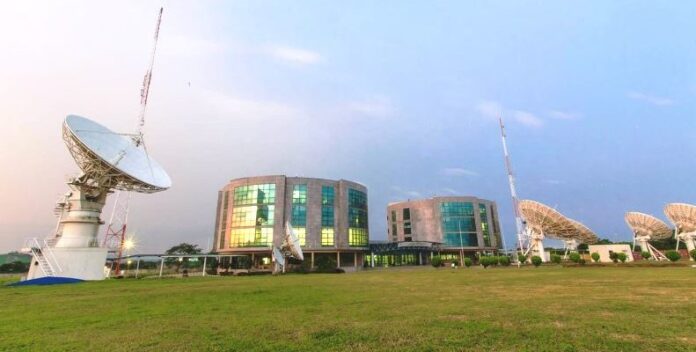

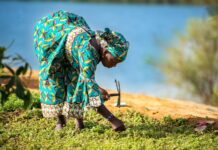

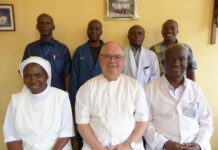
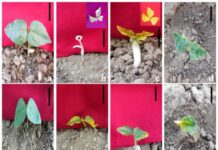


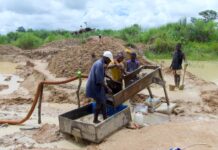




 The African Research (AR) Index is a comprehensive scholarly directory and database focused explicitly on journal publishers that publish and disseminate African research.
The African Research (AR) Index is a comprehensive scholarly directory and database focused explicitly on journal publishers that publish and disseminate African research.

